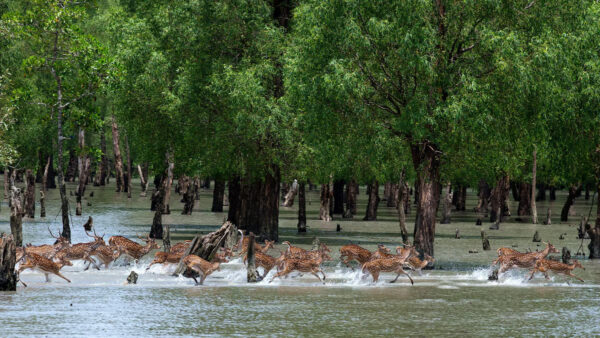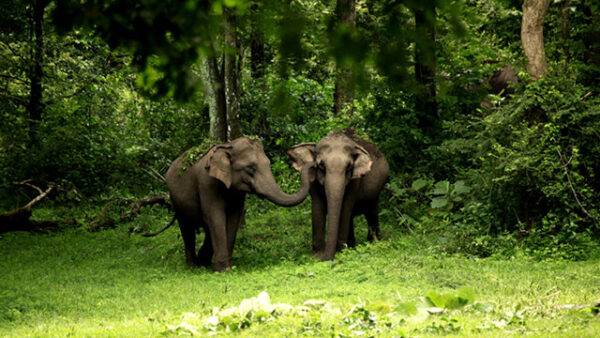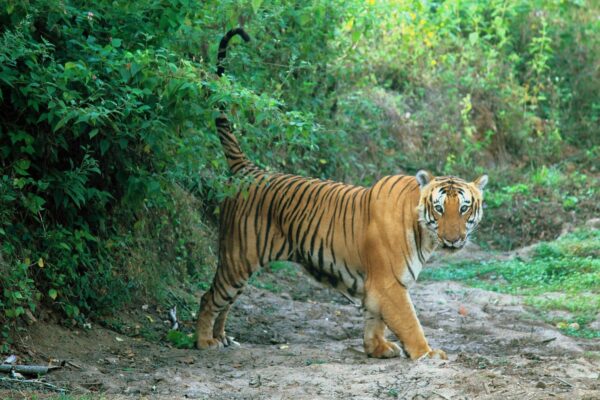From an outsider’s perspective, India might seem bustling and urban, with little space for forests and wildlife. However, this perception couldn’t be more wrong. India is home to several vast and diverse forests and national parks that offer breathtaking landscapes and rich biodiversity. These areas are vital for the country’s environmental health and provide refuge to numerous species. In this article, we explore the ten biggest forests in India as of 2024, showcasing the grandeur and importance of these natural treasures. Let’s dive into the details of these remarkable forests.
Top 10 Biggest Forests In India 2024
1. Sundarbans – 10,277 km²

The Sundarbans, spanning an impressive 10,277 km², is the largest forest in India. Located at the delta of the Ganges, Brahmaputra, and Meghna rivers, where they flow into the Bay of Bengal, the Sundarbans is a UNESCO World Heritage Site. This forest is not only notable for its vast expanse but also for its critical role in protecting the coastal regions from cyclones and tsunamis, safeguarding millions of lives. The Sundarbans is famously home to the Royal Bengal Tiger, adapted to its unique tidal waterways and mudflats. This forest exemplifies the interplay between natural beauty and ecological importance, illustrating why it stands out among the biggest forests in India.
2. Nilgiri Biosphere Reserve – 5,520 km²

Covering 5,520 km² in the Western Ghats, the Nilgiri Biosphere Reserve spans Tamil Nadu, Karnataka, and Kerala. The term ‘Nilgiri,’ meaning ‘blue mountains,’ refers to the purplish-blue flowers of the Strobilanthes kunthiana, which bloom every twelve years. The reserve includes several national parks and sanctuaries, such as Mudumalai, Bandipur, Nagarhole, and Mukurthi, and is home to species like tigers, Asian elephants, and the Nilgiri tahr. The Nilgiri Biosphere Reserve is a key area for wildlife conservation, contributing significantly to the protection of diverse species and ecosystems, making it one of the biggest forests in India.
3. Namdapha National Park – 1,985.23 km²

Namdapha National Park in Arunachal Pradesh covers 1,985.23 km² and is one of the most biodiverse regions in the Eastern Himalayas. The park’s altitude ranges from 200 m to over 4,500 m, encompassing habitats from tropical rainforests to temperate and alpine forests. Namdapha is notable for its rare species, including the red panda and the Namdapha flying squirrel. It also supports four species of big cats: the tiger, leopard, snow leopard, and clouded leopard. This diverse range of ecosystems and species underscores its significance as one of the largest forests in India.
4. Gir National Park – 1,410.30 km²

Situated in Gujarat, Gir National Park spans 1,410.30 km² and is the sole habitat of the Asiatic lion. Conservation efforts have successfully revived the lion population from the brink of extinction, with around 650 lions now residing in the park. The park’s dry deciduous forests, mixed with scrub and grasslands, support not only lions but also leopards, hyenas, and chital. The teak forests and avian diversity make Gir a prime spot for birdwatchers. Gir National Park’s role in the conservation of the Asiatic lion highlights its importance among the biggest forests in India.
5. Jim Corbett National Park – 1,318 km²

Located in Uttarakhand, Jim Corbett National Park covers 1,318 km² and is India’s first national park, established in 1936. Originally created to protect Bengal tigers, it played a crucial role in the initiation of Project Tiger in 1973. The park’s varied landscape includes hilly terrain, riverine belts, marshes, and grasslands. Jim Corbett’s rich biodiversity and its role in tiger conservation make it a significant part of India’s largest forests.
6. Kanha National Park (Kanha Tiger Reserve) – 940 km²

Kanha National Park, located in Madhya Pradesh, covers 940 km² and is crucial for Bengal tiger conservation. Established in 1955 and declared a Tiger Reserve in 1973, Kanha features dense sal forests, bamboo groves, and vast grasslands. It is home to the endangered barasingha, which has seen a resurgence due to conservation efforts. Kanha’s expansive grasslands and diverse wildlife, including the Indian roller and crested serpent eagle, make it a standout among India’s largest forests.
7. Bandipur National Park – 868.63 km²

In Karnataka, within the Nilgiri Biosphere Reserve, Bandipur National Park spans 868.63 km². Positioned at the junction of the Western Ghats and the Deccan Plateau, Bandipur features a mix of dry and moist deciduous forests. It was one of the original sites selected for Project Tiger and is home to species like the Indian elephant, gaur, and dhole. The park’s rich birdlife, including the endangered Indian vulture, highlights its ecological importance as one of the biggest forests in India.
8. Saranda Forest – 820 km²

Saranda Forest in Jharkhand, Asia’s largest sal forest, covers 820 km². This forest is crucial for the local community’s livelihood and supports a high diversity of flora and fauna. However, the region faces challenges due to its significant iron ore deposits, leading to conflicts between conservation efforts and mining activities. Despite these challenges, Saranda Forest remains vital for elephants, leopards, and various bird species, emphasizing its role as one of the largest forests in India.
9. Mawphlang Sacred Grove – 302 km²

In Meghalaya, the Mawphlang Sacred Grove spans about 302 km² and is a unique example of traditional conservation practices by the Khasi tribes. Considered holy by the Khasi, this grove remains untouched by human activity and is rich in medicinal plants and rare species. The sacred grove’s preservation due to cultural practices underscores the importance of traditional conservation methods and its status among India’s significant forests.
10. Pichavaram Forest – 110 km²

Near Tamil Nadu’s coast, Pichavaram Forest extends over 110 km² and is one of India’s most important mangrove ecosystems. This forest provides habitat for numerous fish, birds, and marine life and serves as a natural defense against coastal erosion, cyclones, and tsunamis. Pichavaram’s role in coastal protection and its unique mangrove ecosystem highlight its significance among the biggest forests in India.
Conclusion
This exploration of the biggest forests in India illustrates the country’s rich natural heritage and the diverse ecosystems that sustain its wildlife. From the vast Sundarbans to the unique Mawphlang Sacred Grove, each forest plays a crucial role in maintaining ecological balance and protecting biodiversity. India’s forests are not just about size but also about the vital ecological functions they perform. As you delve into these natural wonders, you’ll discover more about the essential role they play in preserving the environment and supporting wildlife.



